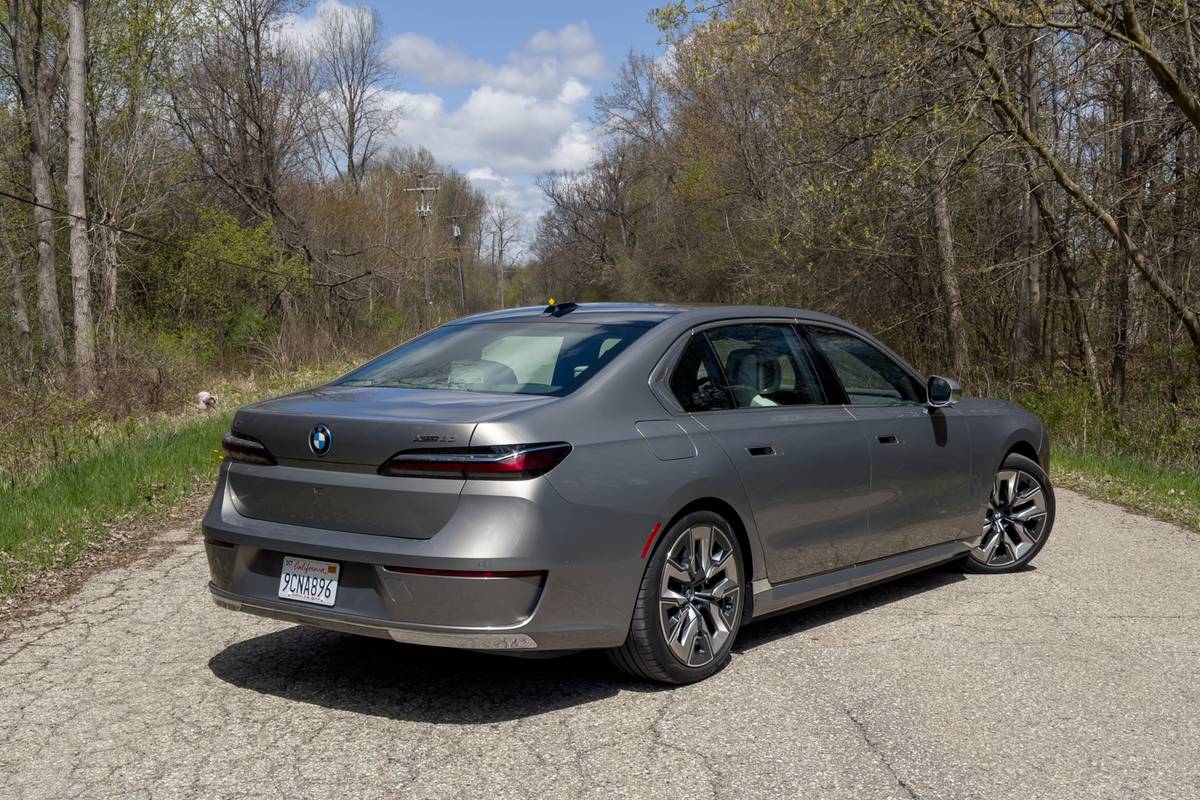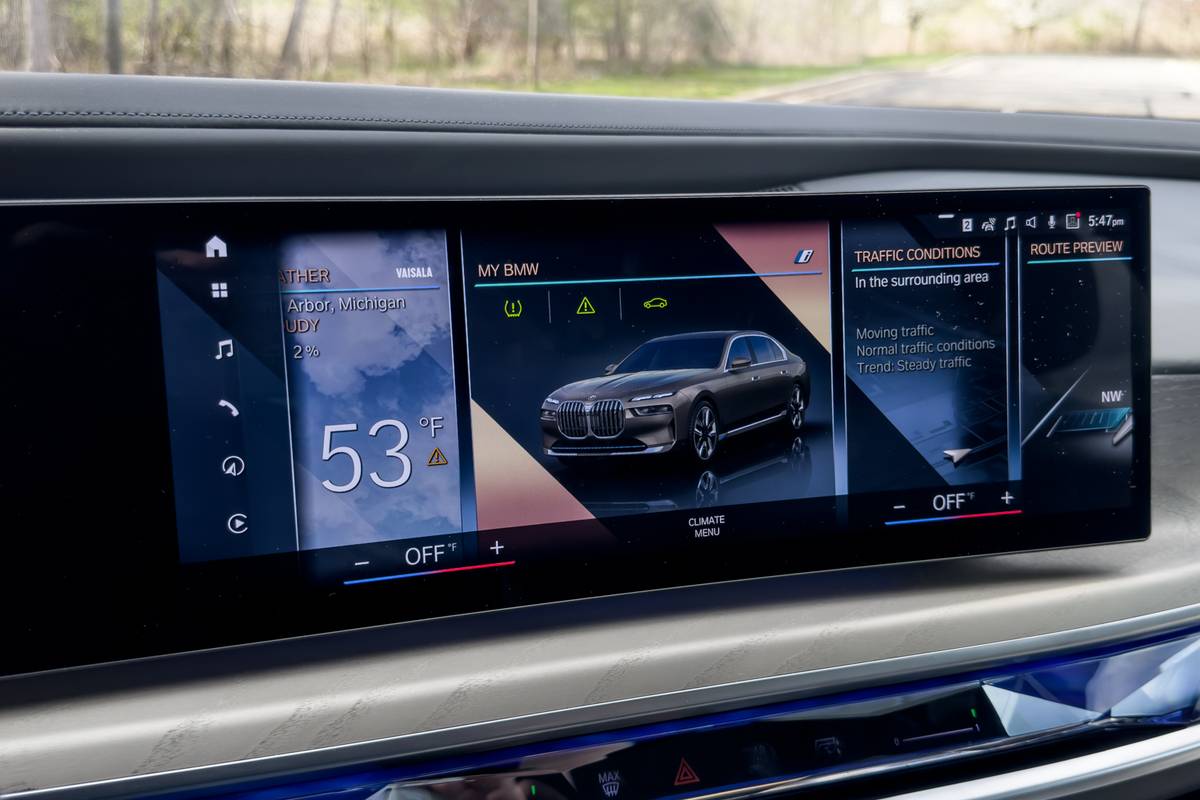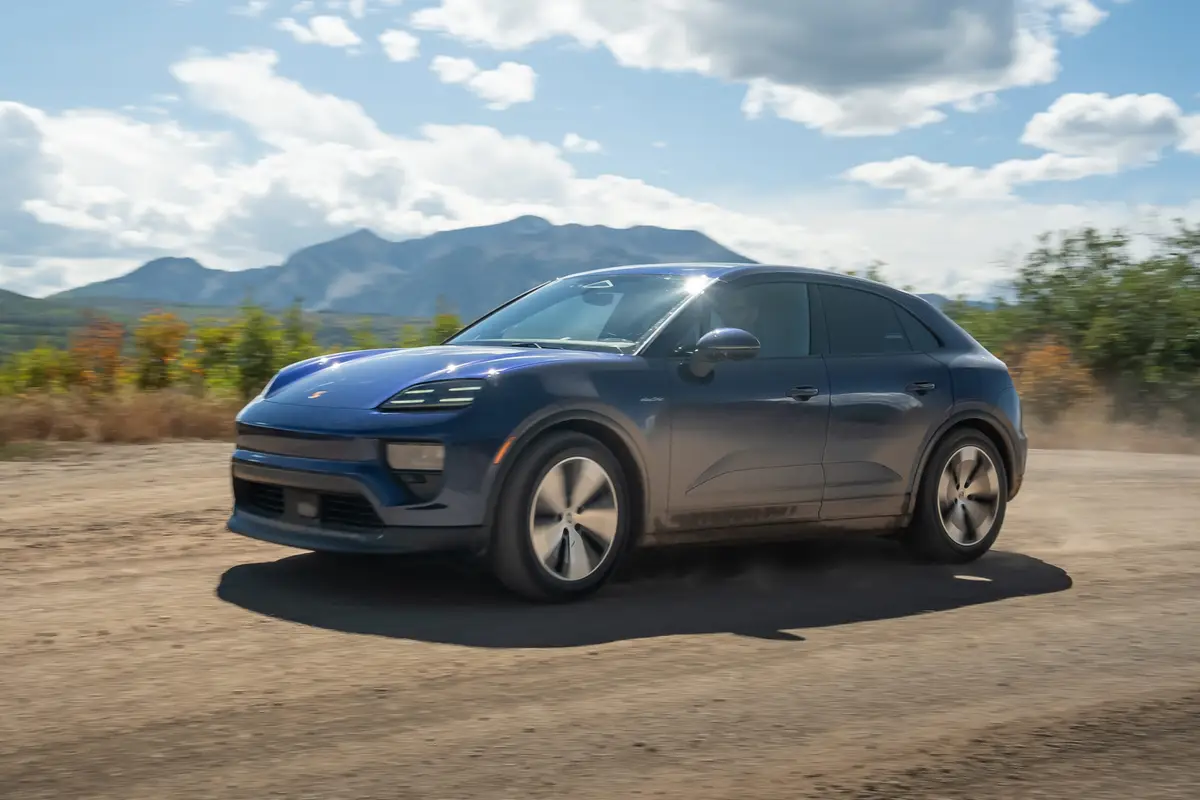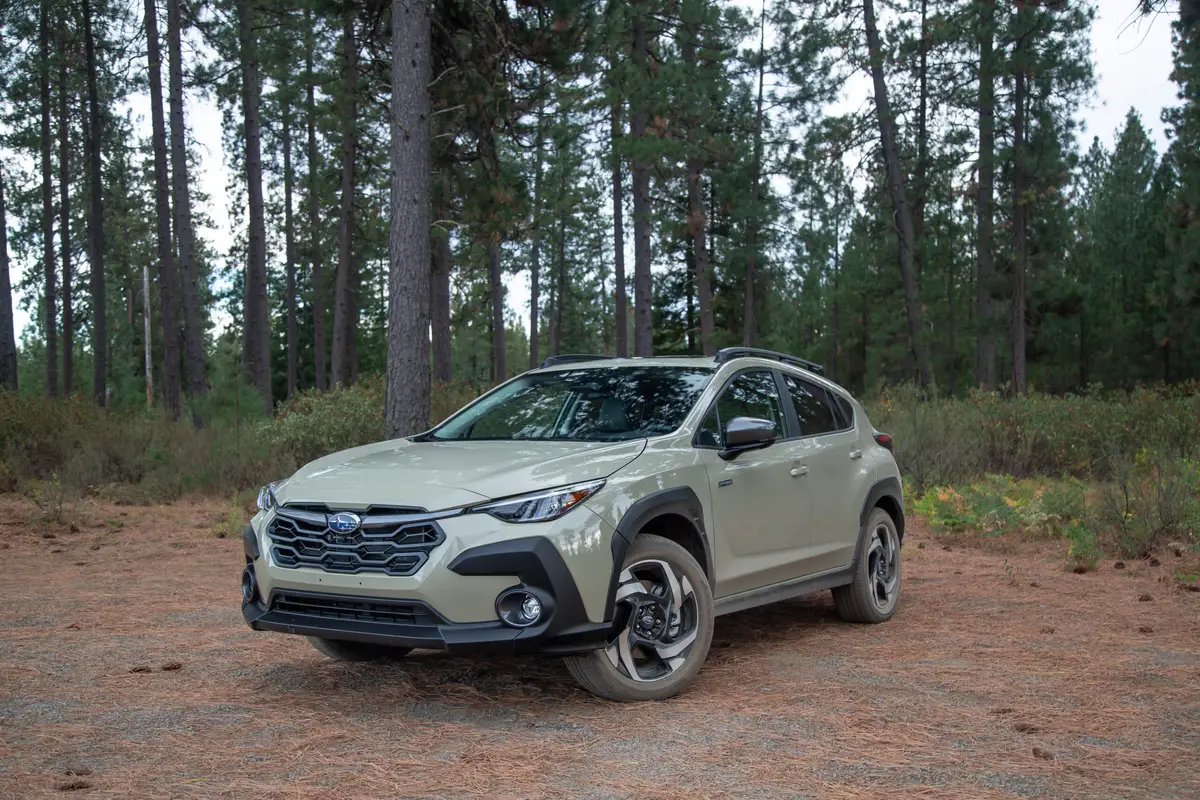Is the 2024 BMW i7 a Good Luxury EV? 5 Pros, 3 Cons

When it comes to the design of electric vehicles, automakers have largely taken one of two approaches. The first is to basically just plug an electric powertrain into a conventional vehicle; the second is to start with a clean slate, which often results in EVs with wild styling and controls that might as well have come from another planet. BMW has chosen the first of these routes with the new i7 luxury flagship sedan, and we think that’s a good thing.
Related: 2023 BMW i7 Review: Smooth Operator, Tricky Technology
Aside from its powertrain, the i7 is virtually identical to its gasoline-powered 7 Series counterpart, from its interior and exterior styling to its controls. That presents luxury buyers with an unusual choice: the same car with either a conventional or electric powertrain. This approach could be a good move, as it gives more conservative luxury car buyers the option of easing into their first EV in a more familiar environment. It’s also a marked departure from the approach chief competitor Mercedes-Benz has taken with their more radically styled and tech-heavy EQ line of electric vehicles.
Cars.com Detroit Bureau Chief Aaron Bragman spent a week with an i7 xDrive60 and came away largely a believer — but as you might suspect, not all is perfect. Tap the link above for Bragman’s expert review of the 2023 model, which remains mostly unchanged barring a couple of new trim levels for 2024; for a quicker look, read on for five things we liked about the 2023 BMW i7 and three things we did not.
Things We Like

1. Choices, Choices
Buyers can choose from three flavors of i7 for 2024, starting with the base rear-wheel-drive eDrive50 with a single 449-horsepower electric motor. Next up is the midrange xDrive60 we drove, with AWD and two motors producing a combined 536 hp. At the top of the range is the M70, which cranks out 650 hp and has a claimed 0-60 mph acceleration time of just 3.5 seconds.
2. Electric Thrills
BMW says the i7 xDrive60 has a 0-60 time of just 4.5 seconds, an impressive number for a vehicle that weighs close to 3 tons. What’s also impressive is that the i7 leaps up to speed in virtual silence with little drama, adding to the premium feel. Response is immediate and smooth, with effortless acceleration from any speed.
3. Long Ranger
With a 101.7-kilowatt-hour lithium-ion battery pack, the i7 xDrive60 is good for a range of about 300 miles according to EPA estimates, which is enough for luxurious motoring that’s free of range anxiety. It can be DC fast-charged at up to 195 kilowatts using a public fast-charging station; using a home Level 2 charging station, it can be charged at up to 11 kW.
4. Battery Bonus
Like other EVs, the i7’s battery sits under the floor. But because it is relatively thin at just 4.3 inches thick, the battery doesn’t intrude on rear-seat room like in competitors such as the Genesis Electrified G80. Having all that weight mounted low also helps with handling, making the i7 feel surprisingly nimble for such a big vehicle.
5. Comfortable Cabin
Unlike virtually every other luxury vehicle and even those merely with upscale aspirations, the i7 does without leather upholstery in favor of a woven fabric covering the seats. It’s a different approach, and it works. The fabric is both comfortable and has an appropriately luxurious look and feel. There’s also plenty of leg and headroom for occupants front and rear, making the i7 much more accommodating than its closest competitor, the Mercedes-EQ EQS.
More From Cars.com:
- BMW Unveils 2024 i7 M70 xDrive, Most Powerful EV BMW Has Ever Produced
- 2023 BMW 7 Series Adds Electric Model, Movie Theater Backseat
- Electric Cars With the Longest Range
- BMW, Mini, Rolls-Royce to Gain Access to Tesla Superchargers
- Which EVs Have All-Wheel Drive?
Things We Don’t Like

1. Mixed Materials
Much as we like the upscale fabric seats in the i7, the rest of the interior’s materials and design are a bit of a mixed bag. The cabin in our test car was done up in different shades of a nondescript gray, creating a look more generic than luxurious. Illuminated panels add a splash of color, but even those shine from behind a panel of cheap-looking clear plastic.
2. Convoluted Controls
The i7’s dash is dominated by a reconfigurable instrument panel and a large and vivid tablet-style touchscreen display that’s mounted high, lending a clean and modern look to the cabin. But the touchscreen climate controls are complicated and maddening to use even when standing still; to try and make adjustments underway is an invitation to distraction.
3. Watch Those Options
With a starting price of $120,295 (including destination), our test i7 xDrive60 would not be an impulse purchase for most buyers. But even those in higher tax brackets might be advised to take care with the options list. Extras such as the Rear Executive Lounge Seating and another package that adds “crystal” headlights brought the total to $151,995. A base i7 starts at $106,695, but a loaded M70 will set you back more than $207,000.
Related Video:
Cars.com’s Editorial department is your source for automotive news and reviews. In line with Cars.com’s long-standing ethics policy, editors and reviewers don’t accept gifts or free trips from automakers. The Editorial department is independent of Cars.com’s advertising, sales and sponsored content departments.
Featured stories





